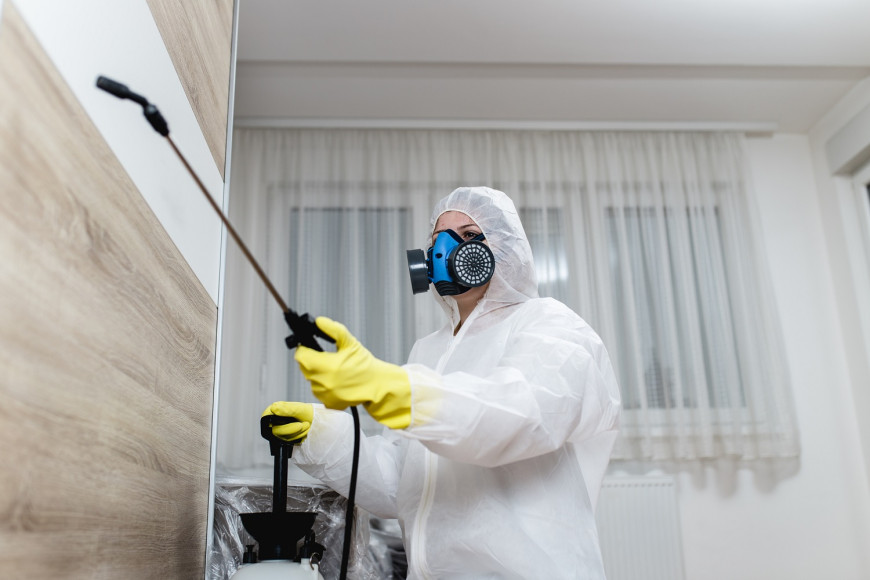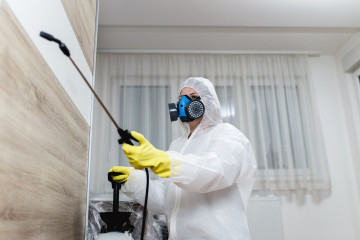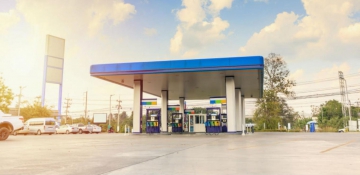In recent years, we have all noticed the seriousness and rapid growth of the nation’s methamphetamine epidemic. In addition to the very serious health risk, the increase of users and producers within our neighborhoods has also given rise to a pressing issue: residual contamination leading to extensive cleanup and remediation and thus the surge in related claims.
These incidents are both disruptive and costly to property owners who must restrict access, decontaminate, and, in some cases, rebuild in those areas affected by the residual methamphetamine contamination. For an insurance claim manager, understanding what is reasonable and necessary can be a challenge when faced with significant costs to remediate and repair/rebuild the affected property.
In our webinar entitled, “Navigating Methamphetamine Contamination and Remediation Challenges: Regulations, Costs, and Best Practices,” Ben Hansen, Vice President and Risk and Financial Services Market Segment Leader, John Wright, Senior Project Manager and Certified Industrial Hygienist (CIH), and Michael Grzybowski, Project Manager, analyze the existing regulatory landscape, detail cleanup actions and costs, and provide effective approaches for managing such claims, including necessary remediation levels and financial considerations.
If you missed the live webinar, you can still watch it on-demand!
How Does Methamphetamine Contaminate a Space?
There are two primary sources of contamination: manufacturing and usage. Most manufacturing happens in makeshift setups in kitchens or bathrooms. There are two main methods of manufacturing methamphetamine, the Ephedrine/Pseudoephedrine reduction method and the “shake and bake” or one-pot method.
-
Ephedrine/Pseudoephedrine reduction method – This is what many people think of – the “RV in the desert” method with glassware and multiple-step chemistry. It uses phosphorus and iodine to turn pseudoephedrine into methamphetamine. Signs of this method are match heads, cold medicine, and road flares, and it is extremely hazardous as it generates deadly phosphine gas during manufacture This method is much worse for insurers as red phosphorous is an additional contaminant that is difficult, if not impossible, to remove. Phosphorus particles strongly adhere to surfaces and permeate into materials more than methamphetamine residue generated during general use of methamphetamine.
-
Shake and Bake – Also known as the one-pot method, this makes up the majority of manufacturing claims. This method is much simpler and uses a single container, such as a 2-liter soda bottle, and involves combining a variety of ingredients all at once and shaking.
Both manufacturing methods pose extreme hazards, resulting in methamphetamine residue, acidic vapors, lithium corrosion, alkaline damage, and ammonium nitrate contamination, all of which can cause severe damage to plumbing. They also carry a high risk of fires and explosions. It’s probably already clear that insurance claims stemming from manufacturing incidents are highly undesirable and you’ll want to avoid them at all costs.
The second source of contamination arises from the intake of methamphetamine through smoking or injecting. This leaves toxic residues on surfaces and permeates porous materials such as carpets and walls. Both smoking and injecting generate aerosols. Smoke in particular is often directed into ventilation systems to evade detection.
Overall, methamphetamine residue is profoundly toxic and has numerous health implications, including systemic and neurological issues. It also acts as a teratogen, causing developmental deficiencies and birth defects and increases the risk of various cancers. Dealing with methamphetamine contamination entails extensive decontamination efforts, the removal of contaminated materials, and potential structural repairs. As a result, the associated costs can be staggering.
The Regulatory Landscape
What kind of regulations are out there for methamphetamine contamination? While states generally possess the authority to establish their guidelines, the Environmental Protection Agency (EPA) has established voluntary guidelines that offer a comprehensive framework for cleanup best practices. These guidelines are not legally binding, but they serve as a valuable reference point.
State-specific guidelines, however, are legally binding and serve as the definitive rules for investigating, remediating, and clearing methamphetamine contamination. Most states mandate certification and licensing for methamphetamine consultants, contractors, workers, and superintendents. It is crucial to verify the credentials of these professionals, as any invalid clearance samples or contractor site remediation self-certifications can lead to significant delays, financial losses, and potential regulatory consequences.
What is the Assessment Process for Methamphetamine Contamination?
The process begins with an incident, which can be triggered by various events such as law enforcement actions, complaints, or real estate transactions. This prompts an initial screening of the site, involving photographic documentation, ventilation system diagrams, visual inspections, sample collection, and a review of relevant records and reports.
When contamination is confirmed, a remediation contractor steps in to perform cleaning, demolition, and post-demo cleanup. The contractor then self-certifies the completion of the work. Subsequently, an independent consultant returns to the site to sample all rooms, determining whether the unit is clear for restoration or if additional remediation is required.
Following successful clearance, the restoration process begins, marking the halfway point in this long journey. One vital consideration is distinguishing between restoration and renovation. In many cases, the original materials in methamphetamine-contaminated units are challenging to source or unavailable, necessitating the use of similar materials in terms of design and value. This process falls under restoration and has a lower cost compared to a renovation or remodel, where higher value or upgraded materials are used. By ensuring costs are only approved for restorations, insurers can significantly reduce their claim payouts, benefiting both the policyholder and the bottom line.
Managing Methamphetamine Contamination Claims
From an insurance perspective, claims are initiated by policyholders who have discovered contamination in their properties or are seeking reimbursement for remediation and restoration expenses. Claims can also arise during real estate transactions, where a property inspection reveals contamination, often leading to disputes between buyers and sellers.
When a claim is filed, insurers must conduct immediate and thorough investigations, employing qualified consultants to assess the extent of contamination and the necessary remediation steps. Bids from contractors are rigorously reviewed, and it is crucial to scrutinize these proposals for discrepancies, inflated costs, or items that do not align with the assessment findings.
Time and materials (T&M) estimates are highly recommended versus lump-sum estimates to ensure accurate billing. Insurers should insist on detailed documentation of estimated time to complete, square footage of areas to be cleaned, materials used, and equipment deployed during the remediation process. Additionally, set clear expectations about items and areas considered necessary for removal as related to remediation. Any deviations from the initial proposal should be scrutinized, as contractors may attempt to manipulate costs or overstate the scope of work.
It is also essential to maintain transparency throughout the claims process, keeping policyholders informed of the progress and any significant developments. Clear communication can mitigate potential disputes and ensure a smoother resolution.
In Summary
Methamphetamine contamination claims are complex and multifaceted, demanding meticulous oversight, adherence to regulatory guidelines, and a discerning approach to cost management. By maintaining a keen eye on cost-saving opportunities, distinguishing between porous and non-porous, restoration and renovation, and conducting immediate and thorough investigations, insurers can effectively manage these claims, providing a reasonable and necessary response while minimizing financial burdens.
Effective management ultimately benefits both policyholders and insurers, and it serves as a foundation for successful restoration and the resolution of affected properties to safe, habitable conditions.
Questions? We can help! Contact our team of experts today.
Want more news and insights like this?
Sign up for our monthly e-newsletter, The New Leaf. Our goal is to keep you updated, educated, and even a bit entertained as it relates to all things EHS and sustainability.
Have any questions?
Contact us to discuss your environment, health, safety, and sustainability needs today.





